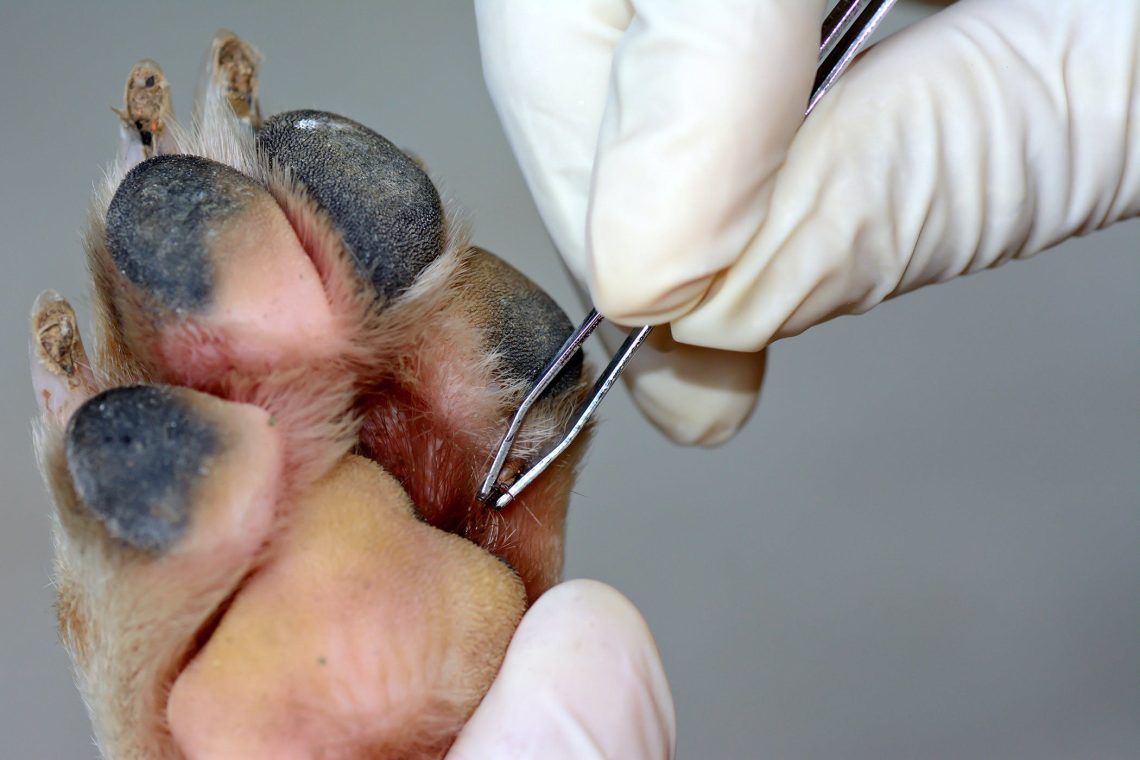
Piroplasmosis in dogs: the main causes, symptoms of the disease and treatment
With the onset of spring, all dog lovers try not to miss the development of piroplasmosis in their pets. It is easy to notice the presence of this disease if you pay attention to the behavior of the dog. So, she refuses food, sleeps a lot and does not ask for a walk. Each person should be able to recognize these warning signs at an early stage in order to avoid serious complications and a long rehabilitation period for the dog.
Causative agent
The causative agent of piroplasmosis is babesia or piroplasm, that is, a tiny cellular parasite. It should be remembered that ticks themselves do not suffer from babesia, but they can transmit the parasite to their own offspring. To become a carrier, a tick does not even need to bite a sick animal. So, babesia can be found in the saliva, stomach and intestines of ticks. The parasite enters the dog, penetrates deeply into the skin, and then begins to suck in and suck out the blood. As a result of this process, babesia enter the body of the animal. When they accumulate too much, the first signs of piroplasmosis will appear.
In young dogs, the disease is noticeable after a few weeks, and in severe cases, early symptoms can be detected 3 days after the bite.
Danger of disease
The process of spreading babesia throughout the body of an animal is very active. In this case, massive death of erythrocytes occurs, and macrophages fail to destroy the affected cells.
The consequences of piroplasmosis are very serious:
- Since erythrocytes are responsible for the respiration of cells, they are insufficiently oxygenated.
- Destroyed red blood cells must be urgently removed from the body of the dog. Otherwise possible death due to intoxication. As a result of the processes occurring in the body, there is too much stress on the liver and kidneys.
- Due to the presence of a significant number of destroyed red blood cells, blood clots form, which leads to kidney failure.
It should be understood that piroplasmosis in acute or chronic form is a huge burden on the cardiovascular and respiratory systems. The heart, along with the lungs, tries to compensate for the lack of oxygen, which can lead to disastrous consequences.
Evidence
In order to notice the development of piroplasmosis in time, it is necessary to monitor the condition of the dog from the beginning of spring until the end of autumn. If an animal abruptly stops playing, becomes lethargic and eats poorlyneed to go to the veterinarian immediately. A possible reason for this behavior may be fatigue from the heat, however, it is better to be safe, because in the presence of piroplasmosis, every hour is very valuable.
Even really caring dog owners do not always recognize the disease at an early stage. People usually know something is wrong when they notice black or brown urine in a pet. Other dangerous symptoms include:
- blanching and yellowing of the mucous membranes;
- refusal to eat;
- strong thirst;
- temperature increase;
- dyspnea;
- apathy;
- vomiting or diarrhea.
Symptoms may vary depending on the severity of the disease. So, in especially dangerous cases, intoxication of the body occurs very quickly, because of which the dog can die in just 3-4 days.
Experts highlight chronic form of piroplasmosis. Its difference is the weak activity of babesias, thanks to which the pet feels normal. However, during times of stress, the parasite becomes active, causing the dog’s condition to worsen.
Diagnosis and treatment
As soon as the owner notices alarming signs in the pet, he must urgently take the dog to the veterinary clinic. There, a blood test will be taken from the animal. Since babesias do not always have time to breed, it is better to take 2 samples at the same time from different areas. In this case, only an urgent analysis should be done, because its results will be ready in 1,5 hours.
If, as a result of a full-fledged laboratory test, the diagnosis is confirmed, the veterinarian will prescribe treatment based on the dog’s symptoms and the results of tests for the number of babesia in the blood. In the case when the doctor offers any standard treatment regimen at the discretion of the owner of the animal, it is necessary to contact another clinic, since an individual approach is of particular importance to get rid of piroplasmosis.
The main task of treatment is to eliminate the consequences of the disease. In addition, you need to understand that only heavy poisons can destroy parasites, namely imidosan, pyrostop, etc. Due to their too strong action, the condition of the dog may worsen, since its blood contains a huge amount of decomposing babesia, dead red blood cells and other dead cells. This leads to a serious load on the cardiovascular system, as well as the kidneys and liver.
In order for the animal’s body to quickly cope with such severe intoxication, maintenance therapy is necessary. We are talking about taking the following drugs:
- plant-based hepatoprotectors;
- vitamin complexes;
- saline solutions;
- drugs designed to normalize the functioning of the cardiovascular system.
Since with piroplasmosis there is an intense load on the kidneys and liver, the pet needs follow a special diet. So, the diet should not contain raw vegetables, and the amount of proteins and fats should be reduced. The basis of the menu is sour-milk products.
For faster recovery, you need to regularly donate blood and urine biochemistry. If necessary, the doctor prescribes special drugs to maintain the work of a particular organ.
As a result of piroplasmosis, the following complications are possible:
- renal, hepatic, pulmonary and heart failure;
- dysfunction of the immune system;
- pancreatitis;
- ischemic brain injury.
To minimize the likelihood of developing such complications, doctors prescribe plasmapheresis. So, the dog’s blood passes through a special filter, thanks to which it is possible to separate babesia and dead red blood cells, that is, to save the liver and kidneys from too serious a load.
preventive measures
To avoid the development of piroplasmosis and subsequent complications, it is recommended to carry out preventive treatment. For these purposes advantix is prescribed. Such a drug destroys ticks, mosquitoes, and fleas before they have time to bite the dog. Drops are applied to the skin and coat of the dog. As soon as the parasite enters the treated animal, its coordination of movements will immediately be disturbed. As a result, the mites fall off the fur and die.
Some dog owners prefer to make pets vaccination against piroplasmosis. You should not do this, because such a vaccine is unable to effectively protect the animal from piroplasmosis. It only reduces the severity of the disease. It must be understood that babesia is not a virus, but a parasite. Accordingly, immunity cannot be developed after vaccination. In the blood of the animal, an environment is formed that prevents the active reproduction of babesia, therefore, it is only possible to alleviate the course of the disease. However, in sick vaccinated dogs, most of the symptoms are blurred, which makes diagnosis more difficult. Moreover, it must be taken into account that the vaccine is toxic. It negatively affects the liver and kidneys.
The best prevention of piroplasmosis is use of special sprays and drops. In addition, examining the pet after each walk on the street will help to avoid the development of the disease. Dog owners who live in the private sector should process the entire local area, which will help prevent babesia from entering the pet’s body.





